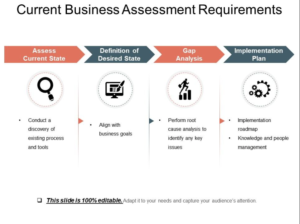As a business owner, I’m always looking for ways to propel my company to new heights. The journey of entrepreneurship is filled with both exhilarating highs and challenging lows, but my ultimate goal is to unlock the full potential of my business and see it thrive. In this comprehensive article, I’ll share my proven strategies and insights on how to take my business to the next level.
Contents
- 1 Assessing the Current State of Your Business
- 2 Setting Clear and Achievable Goals
- 3 Identifying Areas for Improvement
- 4 Developing a Strategic Plan
- 5 Leveraging Technology and Automation
- 6 Building a Strong Team for my business
- 7 Implementing Effective Marketing Strategies
- 8 Embracing Innovation and Adaptability
- 9 Measuring and Tracking Progress
- 10 Conclusion
Assessing the Current State of Your Business
Before I can chart a course for the future, it’s essential to evaluate the current state of my business. I’ll start by conducting a thorough analysis of my company’s financials, including revenue streams, expenses, and profit margins. This will give me a clear understanding of the overall health and performance of my business.
Next, I’ll assess my market position and competitive landscape. Who are my primary competitors, and how do I compare in terms of product/service offerings, pricing, and customer satisfaction? Understanding my strengths, weaknesses, and the industry dynamics will help me identify opportunities for growth and areas that require improvement.
Additionally, I’ll review my customer base and gather feedback on their experiences with my business. What are their pain points, and how can I better address their needs? Gaining these insights will be crucial in shaping my strategic direction.

Assessing the Current State of Your Business
Setting Clear and Achievable Goals
With a solid understanding of my business’s current state, I can now set clear and achievable goals for the future. These goals should be specific, measurable, attainable, relevant, and time-bound (SMART). For example, I might aim to increase revenue by 20% within the next 12 months, expand my customer base by 15%, or launch a new product line within the next 6 months.
By establishing these well-defined objectives, I can create a roadmap for success and ensure that my efforts are focused on the most impactful areas of my business. Regular progress tracking and adjustments will be crucial to staying on course and achieving my desired outcomes.
Identifying Areas for Improvement
As I assess my business, I’ll also identify areas that need improvement. This could include streamlining operational processes, enhancing customer service, optimizing my marketing strategies, or strengthening my financial management.
For instance, I might discover that my inventory management system is outdated and leading to inefficiencies. In this case, I’ll explore ways to implement a more robust inventory tracking and forecasting solution. Or, I might find that my website is not mobile-friendly, hindering the user experience and potentially losing me potential customers. Addressing such issues will be a key focus in my plan to take my business to the next level.
Developing a Strategic Plan
With my goals and areas for improvement clearly defined, I’ll create a comprehensive strategic plan to guide my business’s growth. This plan will outline the specific actions I’ll take, the resources required, and the timeline for implementation.
My strategic plan will address various aspects of my business, such as:
- Product/service development and innovation
- Marketing and sales strategies
- Financial management and optimization
- Operational efficiency and scalability
- Talent acquisition and team building
- Technology integration and automation
By having a well-structured plan in place, I can ensure that my efforts are aligned, my resources are allocated effectively, and my progress is measurable.

Developing a Strategic Plan
Leveraging Technology and Automation
In today’s digital landscape, technology and automation can be powerful allies in driving business growth. I’ll explore ways to leverage various tools and software solutions to streamline my operations, enhance customer experiences, and boost productivity.
For example, I might implement a customer relationship management (CRM) system to better manage my leads and improve communication with clients. Automating repetitive tasks, such as invoicing, scheduling, and social media posting, can also free up my time to focus on more strategic initiatives.
Additionally, I’ll investigate opportunities to integrate data analytics and business intelligence tools to gain deeper insights into my company’s performance, customer behavior, and market trends. These insights will inform my decision-making and help me make more informed, data-driven choices.

Leveraging Technology and Automation
Building a Strong Team for my business
No successful business can thrive without a dedicated and talented team. As I work to take my company to the next level, I’ll focus on building a robust and cohesive workforce.
This will involve attracting and retaining top-performing individuals who possess the skills, experience, and passion to contribute to my company’s growth. I’ll invest in comprehensive onboarding, ongoing training, and professional development programs to ensure my team is equipped with the knowledge and tools they need to excel.
Furthermore, I’ll foster a positive and collaborative work culture that encourages open communication, teamwork, and a shared sense of purpose. By empowering my employees and aligning them with my company’s vision, I can create a synergetic environment that drives innovation and success.

Building a Strong Team
Implementing Effective Marketing Strategies
Effective marketing is the lifeblood of any thriving business. As I work to take my company to new heights, I’ll develop and implement a well-rounded marketing strategy that encompasses both traditional and digital channels.
This may include:
- Refining my brand identity and messaging
- Optimizing my website for search engine visibility
- Leveraging social media platforms to engage with my target audience
- Implementing targeted email marketing campaigns
- Exploring partnerships and collaborations with complementary businesses
- Participating in industry events and conferences
- Implementing a content marketing strategy to establish thought leadership
By crafting a multi-faceted marketing approach, I can effectively reach and connect with my ideal customers, ultimately driving brand awareness, lead generation, and sales.

Implementing Effective Marketing Strategies
Embracing Innovation and Adaptability
In today’s rapidly evolving business landscape, the ability to innovate and adapt is crucial for long-term success. I’ll foster a culture of continuous improvement and innovation within my organization, encouraging my team to explore new ideas, challenge the status quo, and embrace change.
This may involve:
- Regularly researching industry trends and emerging technologies
- Soliciting feedback from customers and incorporating their suggestions
- Encouraging my team to experiment with new approaches and processes
- Staying agile and responsive to shifting market conditions and customer needs
By cultivating an innovative mindset and maintaining a flexible, adaptable approach, I can position my business to capitalize on new opportunities and stay ahead of the competition.
Measuring and Tracking Progress
Throughout my journey to take my business to the next level, I’ll implement robust systems for measuring and tracking my progress. This will involve establishing key performance indicators (KPIs) that align with my strategic goals, such as revenue growth, customer retention rates, lead conversion ratios, and operational efficiency metrics.
By regularly monitoring and analyzing these metrics, I can identify areas of success, pinpoint challenges, and make data-driven decisions to optimize my strategies. This continuous evaluation and refinement will be crucial in ensuring that I’m on the right track and making meaningful progress towards my objectives.

Measuring and Tracking Progress
Conclusion
Taking my business to the next level is an exciting and rewarding challenge that requires a comprehensive, strategic approach. By assessing my current state, setting clear goals, identifying areas for improvement, and developing a well-rounded plan of action, I can position my company for sustained growth and success.
Ready to take your business to the next level? Schedule a consultation with me today to discuss a customized strategy for unlocking your company’s full potential. Together, we’ll create a roadmap for growth and ensure you’re equipped with the tools and resources needed to achieve your business goals.
